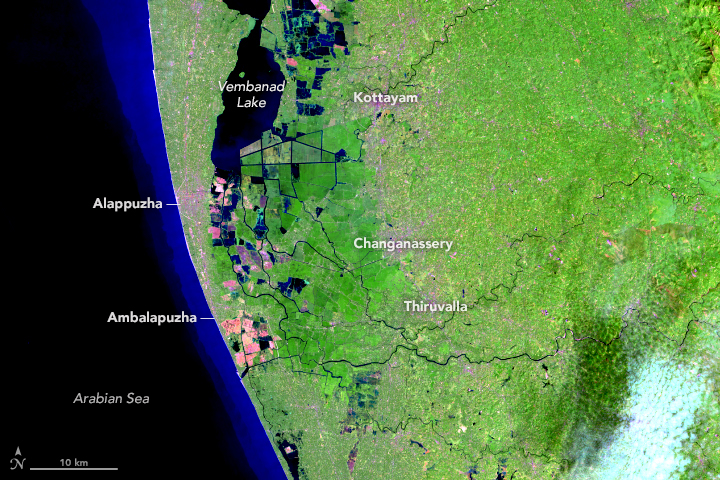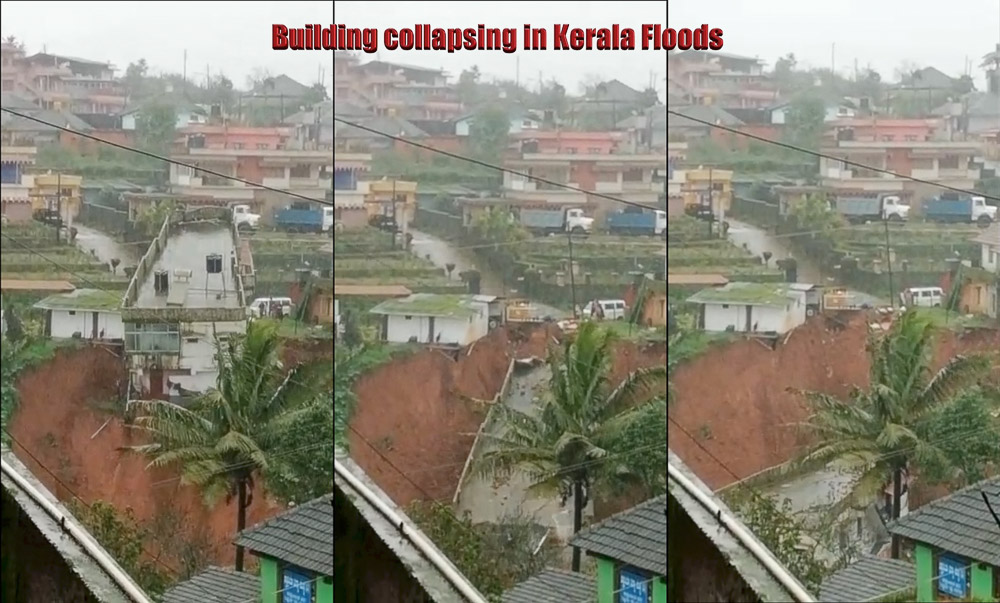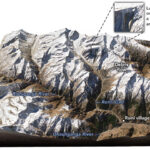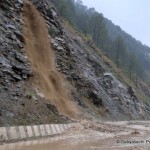Flood Fury: Will we learn from Kerala & Kodagu?
This article is part of the IndiaWilds August Newsletter. Download the full Newsletter PDF by clicking the below button –
Click to check the Newsletter – IndiaWilds Newsletter Aug -2018
July and August is the time for Monsoons is a well known fact. However, the people of Kerala as well as Kodagu in Karnataka were not prepared for the floods. The sorrow of Kodagu was perhaps muted in view of the devastation caused in Kerala where the Floods rivaled the impact of 1924 Kerala floods.
774 out of 1564 villages of Kerala were flooded. Over 13 lakh people had to leave their houses and shift to relief camps. In many places the water suddenly rose a minimum of 20 feet and entire ground floor of houses were drowned. The monetary impact of devastation is quoted as north of 50,000 crores. However, like most of the initial estimates this seems to be low as people come home to discover that in many cases entire houses have either collapsed or have become unliveable.
We always tend to blame it on nature saying that it rained a lot and that caused unprecedented floods. Unfortunately, that is farthest from the truth. It is the hand of man that has provoked nature’s fury.
Kerala is a state which has constructed 53 large dams on its rivers. The question that immediately comes to mind is why a state like Kerala which has 53 large dams had to suffer such a massive flooding. The answer is dams are not used for flood control but primarily for power generation.
The Kerala Electricity board is the one who proposes to build dams and invariably it is in an ecologically fragile place. They plan to retain maximum water even after the monsoon is over. So most of the dams are normally very close to full capacity even before the monsoon rains started. So even when there is sudden rains, the people manning the dams take their own sweet time to take stock of the situation and then release water. This sudden water release leads to flooding. In the normal course a river without a dam would have swollen slightly and the extra water in the rainfall would have gone with the flow without causing breeching of the banks and flooding. Idduki dam hadn’t released water for some 38 years. It was carrying water to its near full capacity when it was forced to open its gates due to the heavy rains.
There is deforestation along the banks of the river. So there is massive silting in the dams and the carrying capacity of the dams have come down over a period of time. There is no single study which captures this figure of loss of carrying capacity of dams over time and its impact. So the amount of water the dams carry now is way less than whatever water they used to carry when they were initially constructed.
To complicate the issue further, there are also large dams which are controlled by other states. So the objective of the dam officials of other states is different as they want to retain more water whereas Kerala was requesting them to release water continuously without waiting for the water levels to reach the maximum and then suddenly release water. This had reached serious proportions as the Tamil Nadu officials manning the Mullaperiyar dam were steadfastly saying NO to releasing water and waiting for the water level to reach the maximum. The Kerala Government had asked Tamil Nadu to release water when the water level reached 136 feet and then again requested when the level further rose to 139 feet. However, Tamil Nadu officials were adamant to raise it further stating that under the Supreme Court order they are allowed to store water upto 142 feet.
In the absence of an independent authority manning the dams, everytime the states have to knock the doors of Supreme Court.
The Kerala Floods also raises some important ecological questions which the political parties and Govt. wants to sweep under the carpet.
The Western Ghat Ecology panel headed by Prof. Madhav Gadgil had submitted its report to the Government which didn’t want to implement it. None of the states (Goa, Maharashtra, Karnataka, Kerala) wanted to implement it as well as that would have entailed curtailing rampant industrialisation and concretisation in the places marked as ecologically sensitive. The short-sighted approach meant that industries and real-estate mafia continued to vandalise the places and concretise it and make money. There have been rampant quarrying in the hills making them denuded and fragile. So when there is rain, there is landslides. People put in their hard earned money to buy such places or construct houses in nearby places and for many people it was a heart-breaking sight to watch their only house breaking like a match-box and being swept away in landslides.
Dams resulted in artificially restraining the rivers. The floodplains were then easily taken over. In a state like Kerala, with leftists leanings, it was easily justified that people are “reclaiming” the forest/swamp lands with their blood, sweat and toil. Most of the wetlands are “reclaimed”. The floodplains and wetlands are designed by nature to absorb the excess water. However, now that they are gone, where will the water go except getting into the houses?
When the Government turns a blind eye to ecological devastation, it doesn’t mean that it can absolve itself from being complicit in the crime. When the dams hurriedly opened their gates, the people who had constructed their houses were simply in many cases wiped away. If the flooding didn’t kill them, the loss of lifelong savings will kill them psychologically. Now each has to fend for himself or herself.
The Government agencies are insensitive to nature as well. The Kochi airport is constructed in the floodplains. No wonder it is flooded and the airport had to be shut down till the end of August.
The Government has to wake up and accept that the extent of devastation in the floods has been exacerbated due to the hand of man and immediately implement Gadgil Committee recommendations. Bitter medicine has to be swallowed when the health condition is precarious.
The Government has to also look into the role of dams. It is important to question the logic of maximizing water retention in dams for the purpose of electricity generation and irrigation. As such the cost of per unit of new power generated from Solar power is much cheaper. So it would be in the interests of the nation to break down some of these dams and allow the river to flow naturally. As such their carrying capacity has dropped due to siltation. So better break few of those and reduce the headache. Let the dams be damned so that people don’t bear the brunt of man’s folly.
Nationalise the major rivers and administer the dams and water release to individual river management authorities. This River Management Authority should look at the river from a holistic perspective and not just become a water releasing authority. Under their aegis the river basin management, cropping advisory to the farmers, maintaining ecological flow as well as steps to study and maintain the riverine ecosystem should be carried out.
When we restore our ecosystems, both forest as well as riparian ecosystems, and halt loss of biodiversity, wild species as well as people will benefit and poverty will reduce.
Unfortunately, this Government hasn’t shown any inclination to act in an ecologically responsible manner despite coining some beautiful slogans. So it is important for the people to understand and put pressure on the Government at Centre as well as State to act. Else, this kind of devastation will become a recurring theme. Please help Rehabilitate Kerala by not only contributing resources but also raise awareness and put pressure on the political class as well as Government so that the KeralaFloods doesn’t become a recurring nightmare.
This article is part of the IndiaWilds August Newsletter. Download the full Newsletter PDF by clicking the below button –
Click to check the Newsletter – IndiaWilds Newsletter Aug -2018
- Endangered Wild Buffalo of Kaziranga - 4 July,2024
- Leopards: The Last Stand Trailer 2 - 1 July,2024
- GoPro Hero 12 Black - 6 September,2023















This was a very incisive and detailed analysis into the Kerala Floods.
This situation is happening all across the country. The wetlands of Kolkata are all but gone, adding to the Kolkata flood scenario.
When development is lopsided, this is what happens.